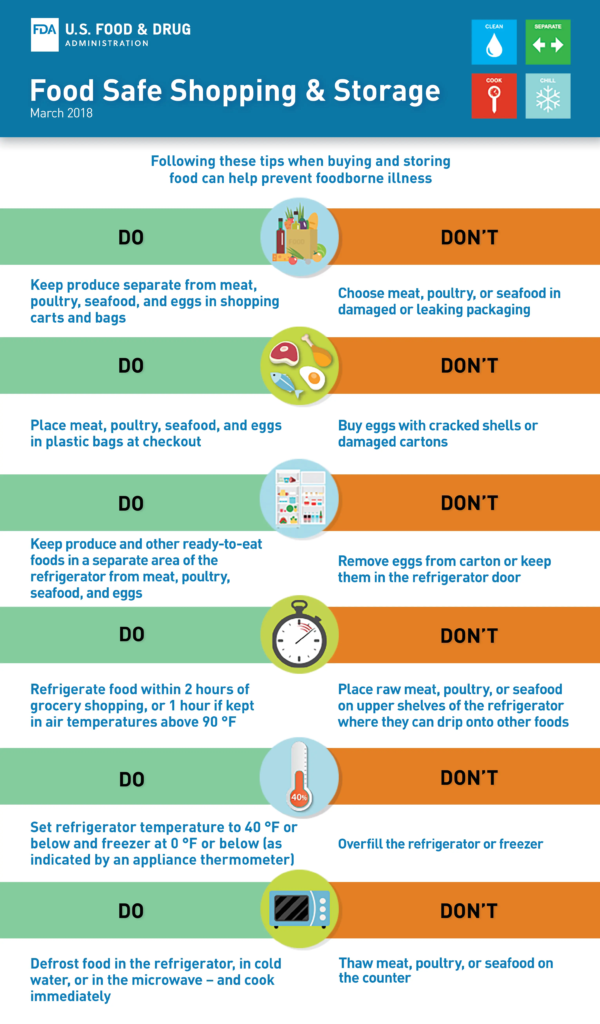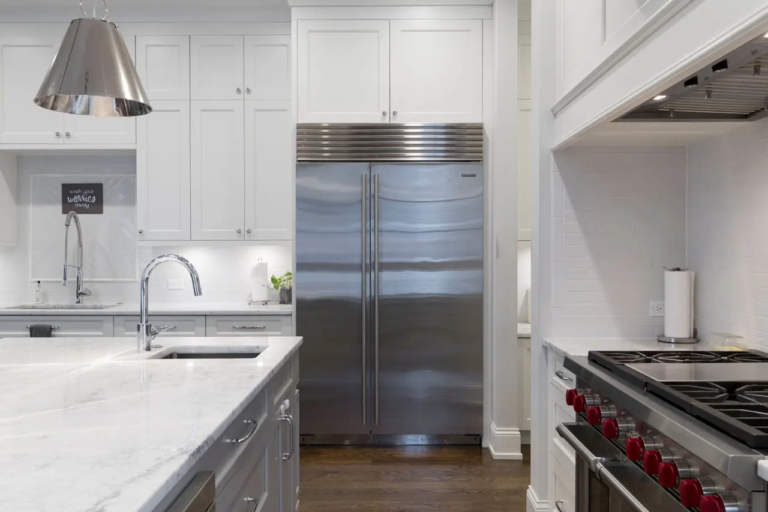Whether you’re running a professional kitchen or cooking at home, there are certain best practices you can follow to maintain kitchen safety. The kitchen is one of the most accident-prone areas, with risks like burns, cuts, and food contamination.
With the practical tips below, you’ll be able to create a safer environment, from handling equipment properly to keeping your kitchen area clean. We’ll also show you the most common hazards in the kitchen and how to deal with them.
Getting to know kitchen safety practices
The food preparation and serving industry can be prone to nonfatal injuries and illnesses at work. Slips, trips, and falls being the most common. Cooking equipment is also the leading cause of home fires and home fire injuries, especially unattended cooking.
Because of this, it’s essential to have a good grounding in kitchen safety practices before stepping into the kitchen. These safety practices can be part of your routine since they’re not hard to follow. They’ll also prevent common accidents, ensuring that you can be confident in the safety of the food too afterwards.
Tips and best practices for kitchen safety
1. Wipe up spills immediately
Cleaning up spills as soon as they haappen is one of the easiest ways to prevent accidents in the kitchen. Whenever you spill water, oil, or any other liquid on the floor, it can become dangerously slippery. Keep a towel or mop nearby when cooking so you can quickly take care of any mess.
Wet floors can also attract pests, so this habit not only boosts safety but also keeps your kitchen more sanitary. If you use rugs or mats, they should have non-slip backing to make slipping even less likely.
2. Keep knives sharp and use them properly
A sharp knife is safer than a dull one because you need less force to cut through food. Otherwise, if it’s too dull, your hand might slip, and you might get injured. Use a sharpening stone or knife sharpener on your knives regularly and keep them in good condition.
When using a knife, always cut away from your body and keep your fingers tucked in. This way, you hold the food with a “claw grip” to avoid accidental cuts. Pay attention to the surface you’re cutting on—your cutting board should be sturdy, not slipping during use.
Avoid cutting too on surfaces that might damage your knife, such as glass or ceramic.
3. Store knives in a block or drawer organizer
If you leave knives loose in a drawer or on countertops, someone might grab the sharp edge by mistake. Consider investing in a dedicated knife block or an organizer that fits in your kitchen drawer. Store all knives with their blades covered or positioned in a way that reduces the risk of injury.
This also protects the blades from unnecessary wear and tear. When knives are tossed loose in a drawer, the blades can rub against other utensils and even each other. The constant friction and impact can dull the sharp edge of the blade over time.
4. Wear fitted clothes and non-slip shoes
The clothes you wear in the kitchen also matter! Loose sleeves or baggy clothes are a no-no because they can easily catch fire if you’re working near a stovetop. They can also get caught in equipment, leading to accidents. Choose clothes that fit close to your body, especially in a professional kitchen where fast movements are common.
It’s also important to wear non-slip shoes, since kitchen floors can get very slippery due to spills, grease, or water. For added protection, try to wear shoes with closed toes. This protects your feet from spills of hot liquids or sharp objects.
5. Use a range hood or open a window
Proper ventilation is a key part of keeping your kitchen safe and comfortable. A range hood helps remove smoke, steam, and odors from the kitchen while reducing the buildup of grease on surfaces. It also boosts air quality by filtering out fumes from cooking oils and gases from stovetops.
If you don’t have a range hood, make sure to crack open a window while cooking. This allows fresh air to circulate so smoke won’t become excessive. Poor ventilation can lead to stuffy, smoky conditions that make it hard to breathe, and it increases the risk of fire too. Aside from this, smells can linger uncomfortably after cooking is finished.
6. Use dry oven mitts for hot items
Always use dry oven mitts or potholders when handling hot items in the kitchen to avoid burns. If your mitt is wet, it can transfer heat more quickly and cause steam burns. These are often more severe than regular burns.
Keep a pair of clean, dry mitts or potholders within reach while cooking, especially near your oven or stovetop. Make sure your mitts are in good condition and free of holes or worn-out spots.
In a busy kitchen, it’s easy to forget to check whether mitts are damp or contaminated with oil. Make it a habit to replace or clean them frequently. This helps you handle hot pots, pans, and trays safely.
7. Keep towels and papers away from the stove
It’s easy to leave dish towels, oven mitts, or paper towels on the countertop while cooking. But keeping them near the stovetop or open flames is dangerous. These can catch fire quickly, especially in a busy kitchen where distractions are common.
Always store these items in a designated spot far away from the stove or other heat sources. After wiping your hands or using towels, return them to their proper place. In professional kitchens, it’s essential to train staff to be constantly aware of what’s near the stovetop. After all, misplacing items like this can cause accidents.
8. Stay near and pay attention when cooking
One of the most important rules in kitchen safety is to stay focused and never leave cooking food unattended. Fires can start quickly, especially when frying or boiling liquids. Even a few seconds away from the stove can lead to disaster.
If you need to step out of the kitchen, turn off the stove as much as possible. Distractions like answering the phone or stepping outside can cause you to forget what’s on the stove, leading to burned food, fires, or accidents.
9. Clean your appliances regularly
By cleaning kitchen appliances thoroughly, you can prevent grease buildup, which can easily ignite and cause fires. Grease accumulates on stovetops, ovens, and hoods over time, creating a significant fire hazard.
Make it a routine to wipe down these surfaces after each use. Then conduct deeper cleanings weekly or monthly, depending on how often you cook. Pay attention to small crevices where grease can accumulate, and use degreasers when necessary.
Check too if your appliances are working properly. Look out for wear and tear, like loose gas lines or faulty electrical connections.
10. Separate cutting boards for raw and cooked food
Using separate cutting boards for these is a simple yet effective way to prevent cross-contamination in the kitchen. Raw meat often carries harmful bacteria, like salmonella or E. coli. These can transfer to vegetables or cooked foods if they come in contact. Assign one cutting board only for raw meat and another for vegetables or cooked items to avoid this risk.
If you’re in a busy kitchen, you can color-code cutting boards to make this separation easier to follow. After preparing raw meat, always wash the cutting board thoroughly with hot water and soap. This kilsl lingering bacteria, keeping your meals safe and healthy.
11. Keep a first aid kit around
Having a readily accessible first aid kit is essential for handling minor injuries like cuts, burns, or scrapes. Put it in a drawer or cabinet that’s easy to reach in case of emergencies.
The kit should include essentials like bandages, burn ointment, antiseptic wipes, and sterile gauze. It’s also useful to have scissors and adhesive tape for larger injuries.
You can also get familiar with basic first aid procedures so you can respond quickly in case of accidents. Everyone in the kitchen should know where the kit is located and how to use it.
12. Refrigerate perishable food promptly
Perishable foods like meat, dairy, and eggs should never be left out at room temperature for more than two hours. This is because bacteria can grow quickly in warm conditions. After cooking or serving, refrigerate leftovers as soon as possible to prevent foodborne illnesses. Store foods in airtight containers to keep them fresh and prevent contamination.
Here’s an infographic from the FDA with additional storage tips:

You can use labeled storage containers with dates to track how long food has been refrigerated. If you’re at home, check your fridge regularly to make sure leftovers are consumed or discarded within safe timeframes.
Common hazards in the kitchen
Here are the top hazards to look out for in any kitchen:
- Slips and falls – Wet or greasy floors are one of the primary causes of this. Look out for spilled liquids, food debris, or even water from cleaning.
- Burns – Be careful when handling hot stovetops, ovens, and boiling liquids.
- Cuts from sharp objects – Knives, mandolins, and other sharp tools are kitchen essentials. Handle them properly–keep blades sharp and only use the right tools for the job.
- Fire – Kitchens are one of the most fire-prone areas. Stovetops, ovens, and flammable materials like towels or grease pose higher risks.
- Cross-contamination and foodborne illnesses – Handling raw meat, seafood, or poultry improperly can lead to cross-contamination.
- Electrical hazards – Kitchen appliances like mixers, toasters, and blenders can cause electric shock. This can happen especially when used near water or with problems like frayed cords or overloaded outlets.
By following the best practices above, you can mitigate these risks. If you work at a restaurant, it’s also important for all staff to be properly trained on kitchen safety protocols.
How modern technology helps you with kitchen safety
Using checklists to make kitchen safety, cleaning, work, and planning much easier. For example, these kitchen cleaning checklists help you follow safety protocols and do tasks on time.
Lumiform is a powerful mobile inspection and audit app that revolutionizes how you work in the kitchen. Streamline your kitchen safety processes with paperless safety inspections and checklists via smartphone or tablet.
- Get a general overview of everything that happens in the kitchen.
- Kitchen safety processes or inspections are completed about 30%-50% faster, depending on the application.
- Easier analysis of all data and faster identification of areas that need more attention.
- Increase the efficiency of your safety processes: Resolve incidents up to 4x faster than before through more efficient communication with the team, third parties, and management for faster incident reporting.
- All results, images, and comments are automatically bundled into a digital kitchen cleaning report.
- With Lumiform’s AI checklist builder, you can optimize internal kitchen safety processes and inspections at any time. The user-friendly interface guides you through the kitchen safety checklist, and no training is required.
To help you get started, we’ve compiled the best kitchen safety checklists. Create your own custom kitchen safety checklist by downloading a template for free and customizing it to your needs.
